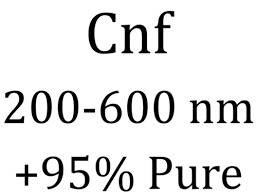Ultra-Long Nanofibers: Strategies to Improve Performance and Expand Functions
Ultra-long nanofibers are gaining strong interest across many fields today. These thin fibres can stretch for great lengths while staying very light. Their long shape helps them handle stress with ease. Their fine structure also helps them support new uses in energy, health, and electronics. The industry sees fast growth because science now creates longer and tougher fibres with simple methods. These fibres show strong promise for engineers and product makers. They also support key goals in clean energy and smart devices.
Why Ultra-Long Nanofibers Matter
Ultra-long NanoFibers can handle more load than short fibres. They carry stress along their length with less breakage. Their long form also supports better contact in sensors and filters. These benefits help companies use them in textiles, medical tools, and batteries. One advantage stands out. A long fiber network easily integrates with other fibres. This gives high strength with low weight. This helps the aerospace greatly.
Key Strategies to Improve Fiber Performance
Scientists use many methods to boost fiber performance today. One method stretches fibres during production. This aligns molecules inside the fiber. Tighter alignment improves strength and flexibility. Another method uses heat to make fibres stable. Heat treatment removes weak spots in the structure. This helps fibres last longer under stress.
Adding tiny particles to fiber mix also helps. These added particles change the fiber surface. They improve grip and flow. Some particles improve heat control. Some boost electrical response. Each change supports a new use for the fiber. Every method aims to push the limits while keeping costs low.
How Researchers Push Length Limits
Researchers now push for fibers that run several meters. They improve spinning speed with precise control. They use better nozzles to produce smooth fibers. They also refine the mix of materials for even flow. These steps help create perfect strands without breaks. Each breakthrough helps industries scale production without rising costs.
Conclusion
Ultra-long nanofibers show real value in many sectors today. Their strength, shape, and flexibility make them useful in energy, health, and clean tech. They also support new forms of smart materials. With better methods, scientists now push performance to new levels. These fibers help shape safer devices and stronger products. They open many paths for innovation. Many companies now explore them with serious interest. Nanofibers will play a major role in the future of advanced materials.
